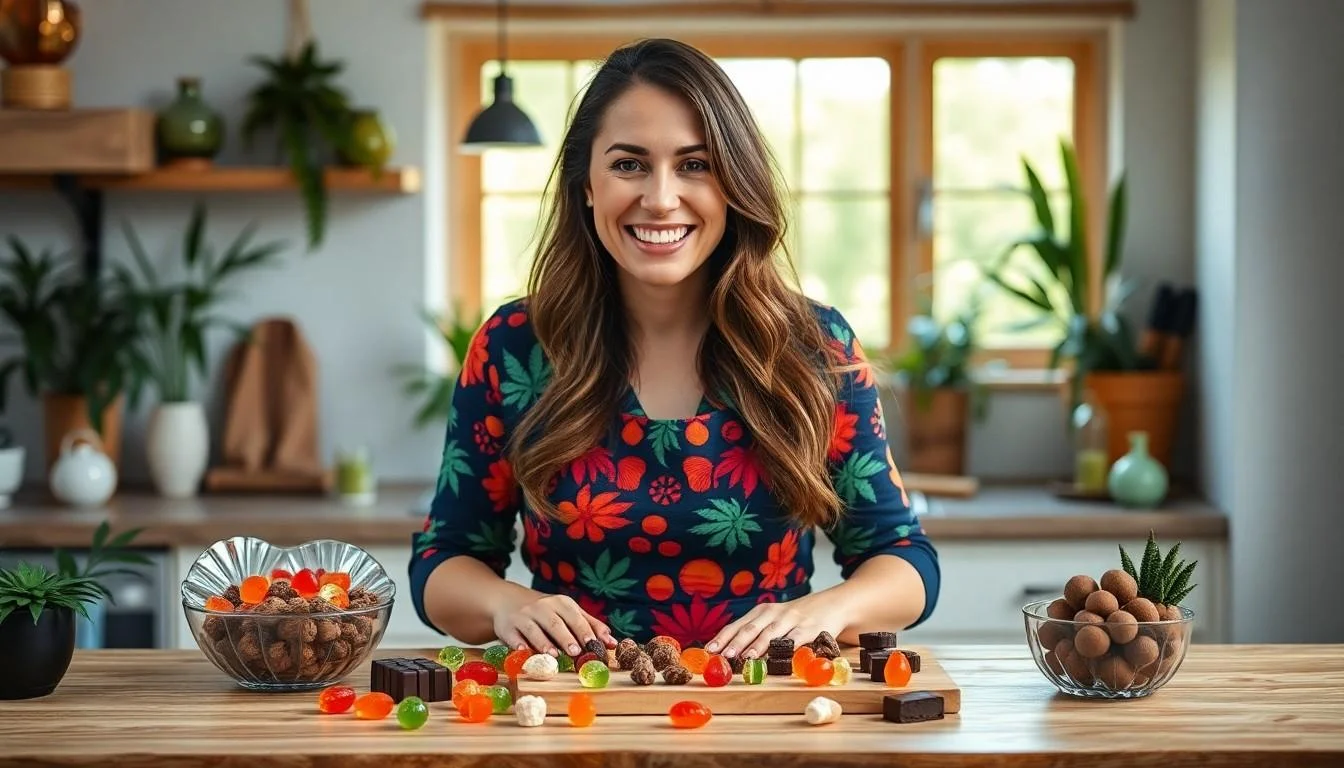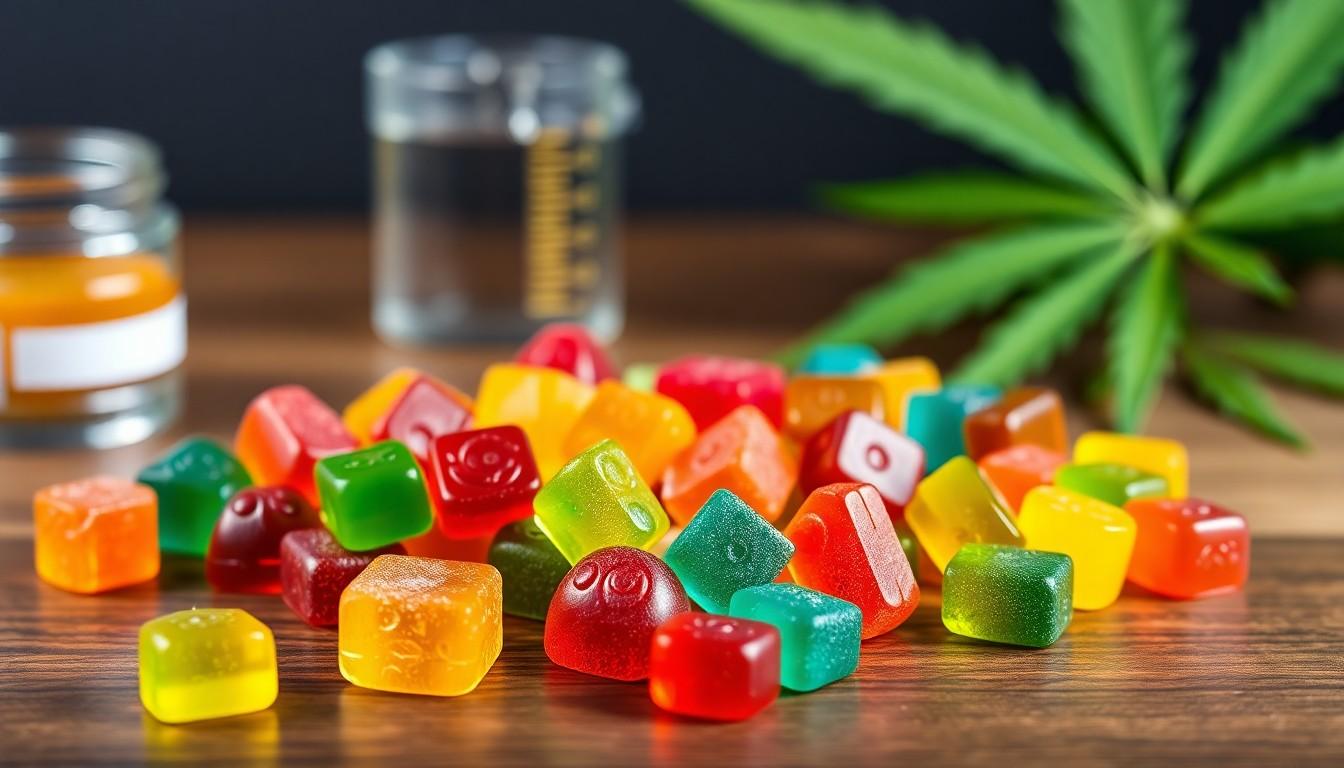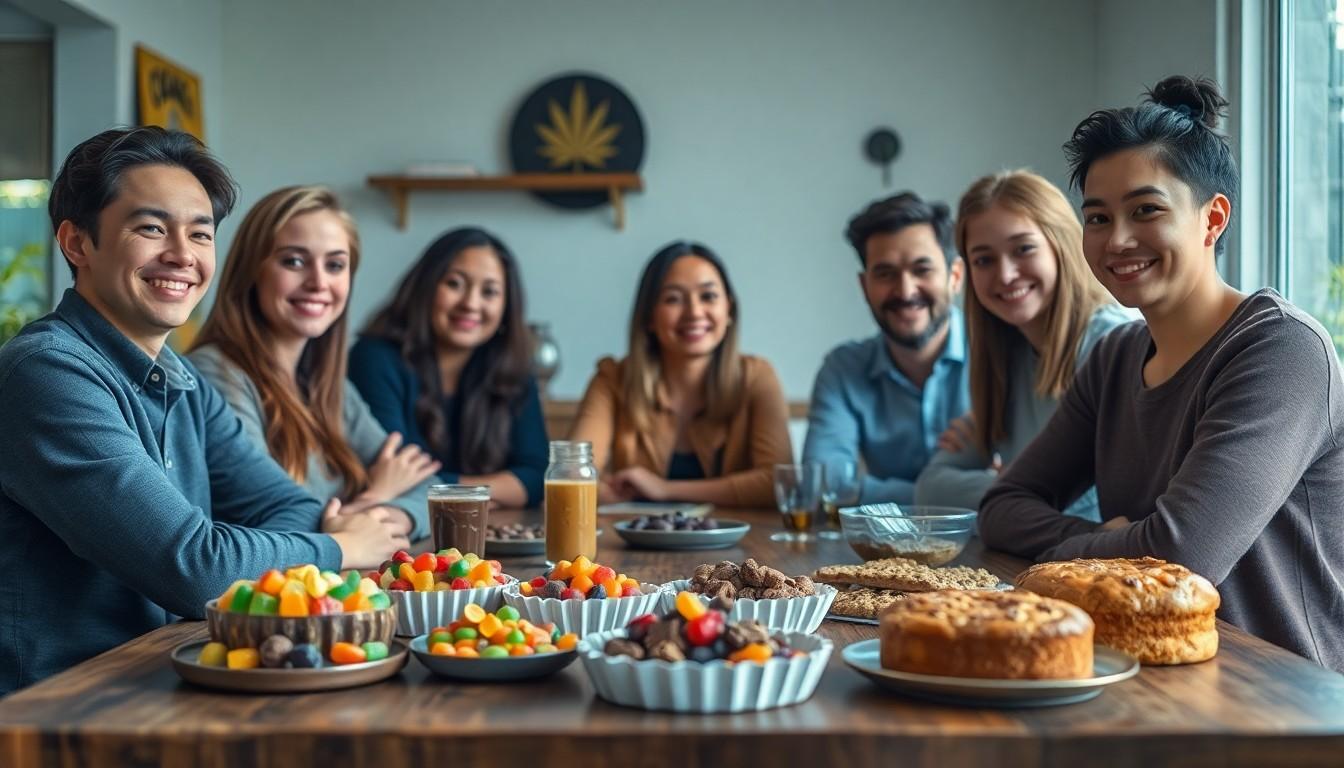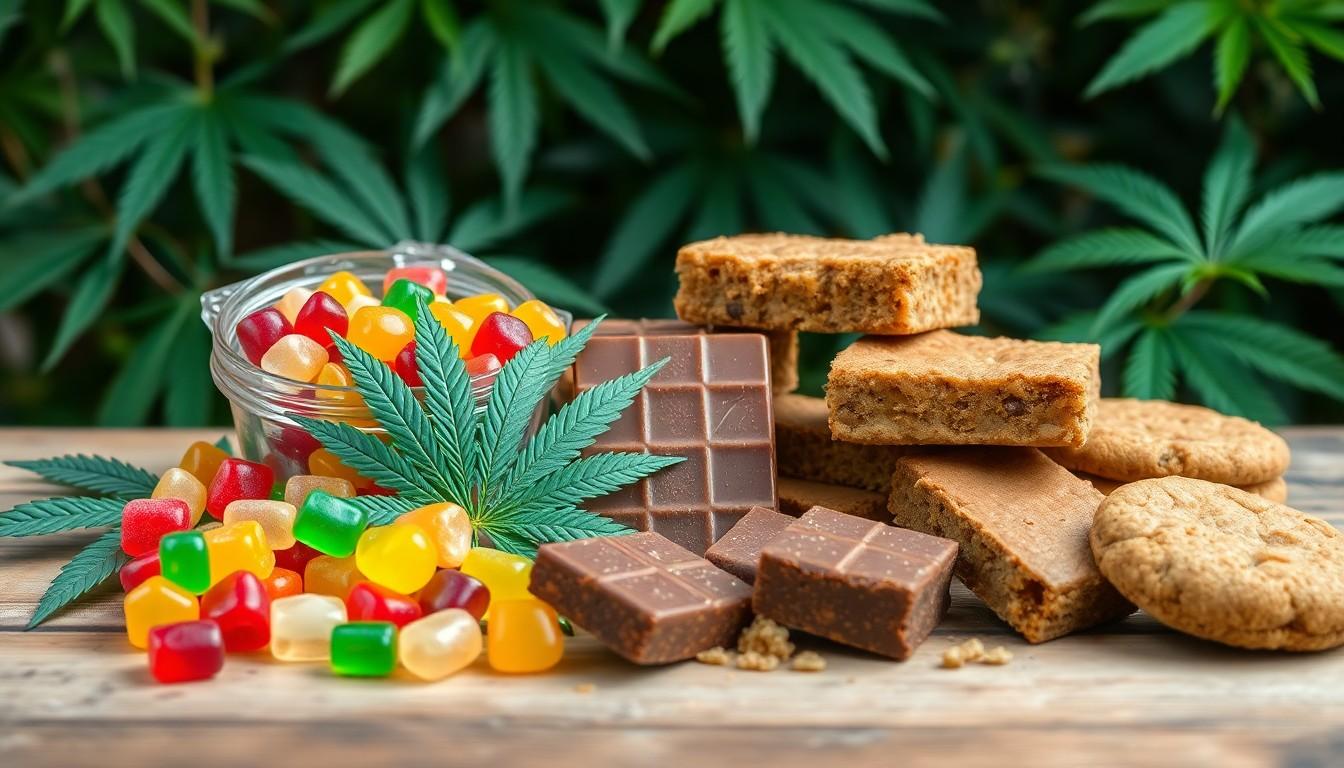Cannabis Edibles 101: Your Complete Guide to Safe and Enjoyable Consumption
Cannabis edibles have transformed the way people consume marijuana, offering a discreet and often more potent alternative to traditional smoking methods. As cannabis popularity grows in Canada, more individuals are exploring these tasty and convenient cannabis-infused products.
I’ve spent years researching and understanding the nuanced world of cannabis edibles, and I’m excited to share comprehensive insights into this rapidly evolving market. From gummies and chocolates to baked goods and beverages, the variety of edible options has exploded, giving consumers unprecedented choices in how they experience cannabis.
Key Takeaways
- Start Low, Go Slow: Begin with low doses (2.5-5 mg THC) and gradually increase to understand personal tolerance and minimize potential adverse effects
- Understand Unique Metabolization: Cannabis edibles process differently from smoking, with slower onset (30-90 minutes) but longer-lasting effects (4-12 hours) that occur through liver metabolism
- Read Labels Carefully: Always examine product labels for total THC/CBD content, serving size, number of servings, and cannabinoid concentration to ensure safe and informed consumption
- Consider Individual Factors: Personal tolerance varies based on metabolic rate, body weight, previous cannabis experience, and individual cannabinoid sensitivity
- Prioritize Safe Consumption: Choose reputable sources, consume in a comfortable environment, stay hydrated, and avoid mixing with alcohol or other substances
- Explore Diverse Product Options: Cannabis edibles come in various formats, including gummies, chocolates, baked goods, beverages, and capsules, catering to different preferences and dietary needs
Understanding the basics of dosage effects and responsible consumption is crucial for anyone interested in trying edibles. This guide will walk you through everything you need to know to make informed and safe decisions about cannabis-infused products, whether you’re a curious newcomer or a seasoned enthusiast.
What Are Cannabis Edibles
Cannabis edibles represent food and beverage products infused with cannabis compounds such as THC and CBD. These products transform cannabis into a consumable form, offering an alternative method of experiencing cannabis effects without traditional smoking.
Types of Cannabis Edibles
Cannabis edibles span a diverse range of products, including:
- Gummies: Soft, chewy candies with precise cannabinoid concentrations
- Weed Chocolates: Artisan and commercial bars with embedded cannabis extracts
- Baked Goods: Brownies, cookies, and pastries infused with cannabis oils
- Beverages: Teas, sodas, and energy drinks containing cannabis compounds
- Capsules: Gel caps with measured cannabis oil doses
- Mints and Lozenges: Discrete, fast-dissolving cannabis-infused products
How Edibles Differ From Other Consumption Methods
- Metabolization: Edibles process through the liver, creating a different chemical transformation compared to inhalation
- Onset Time: Slower initial effect (30-90 minutes) versus immediate respiratory methods
- Duration: Longer-lasting effects ranging from 4-12 hours
- Dosage Control: More precise measurement of cannabis compounds
- Discretion: No smoke or distinct cannabis odor
- Health Impact: Reduced respiratory strain compared to smoking methods
Understanding Dosage and Potency
Cannabis edibles interact differently with the body compared to other consumption methods, making precise dosage understanding critical for a safe and enjoyable experience. Accurate potency assessment helps consumers control their cannabis intake and minimize potential adverse effects.
Recommended Starting Doses
Cannabis edible dosages vary based on individual tolerance and experience levels. I recommend the following general dosage guidelines:
| User Experience | THC Dosage | Effects |
|---|---|---|
| First-time Users | 2.5-5 mg | Mild relaxation |
| Occasional Users | 5-10 mg | Moderate psychoactive effects |
| Experienced Users | 10-15 mg | Stronger psychological impact |
| Advanced Consumers | 15-30 mg | Intense psychoactive experience |
Factors influencing individual tolerance include:
- Metabolic rate
- Body weight
- Previous cannabis consumption
- Cannabinoid sensitivity
How to Read Cannabis Edible Labels
Cannabis product labels provide essential information for dosage control. Key elements to examine include:
- Total THC/CBD content per package
- Serving size milligrams
- Number of servings per package
- Cannabinoid concentration percentages
- Batch/production date
- Recommended storage conditions
I advise consumers to carefully review labels and start with the lowest recommended dose to assess individual response and minimize potential adverse reactions.
Health and Safety Considerations
Cannabis edibles present unique health implications that consumers must carefully understand. Responsible consumption requires comprehensive knowledge of potential benefits, associated risks, and legal frameworks surrounding these products.
Potential Benefits
Cannabis edibles offer multiple therapeutic and wellness-related advantages:
- Pain Management: Cannabinoids interact with pain receptors to potentially reduce chronic pain symptoms
- Anxiety Reduction: CBD compounds may help moderate stress and anxiety levels
- Sleep Improvement: Certain cannabis formulations can support more consistent sleep patterns
- Inflammation Control: Cannabinoids demonstrate potential anti-inflammatory properties
- Neurological Support: Emerging research indicates possible neuroprotective effects
Side Effects and Risks
Consumers must recognize potential adverse reactions associated with cannabis edibles:
- Overconsumption Risks: Delayed onset can lead to accidental excessive intake
- Cognitive Impairment: Short-term memory and concentration may be temporarily affected
- Cardiovascular Strain: Potential increased heart rate and blood pressure
- Psychological Impacts: Rare instances of anxiety or paranoia in sensitive individuals
- Interaction Warnings: Potential contraindications with certain medications
Legal Considerations
| Jurisdiction | Purchase Age | Maximum THC Content | Public Consumption |
|---|---|---|---|
| Federal Law | 18+ | 10mg per package | Restricted |
| Ontario | 19+ | 10mg per package | Limited locations |
| British Columbia | 19+ | 10mg per package | Designated areas |
| Alberta | 18+ | 10mg per package | Regulated spaces |
Choosing the Right Cannabis Edibles
Selecting the perfect cannabis edible requires careful consideration of multiple factors beyond potency. I’ll guide you through key aspects that ensure an optimal and enjoyable consumption experience.
Flavour Profiles
Cannabis edibles offer diverse flavour experiences ranging from sweet to savoury. I categorize flavour profiles into 5 primary groups:
| Flavor Category | Examples | Taste Characteristics |
|---|---|---|
| Fruit-Based | Strawberry gummies, mango chews | Bright, sweet, mask cannabis undertones |
| Chocolate | Dark chocolate bars, truffles | Rich, complex, minimize herbal notes |
| Baked Goods | Brownies, cookies | Familiar texture, traditional taste |
| Herbal | Tea-infused options | Natural, earthy cannabis flavour |
| Neutral | Capsules, mints | Minimal taste interference |
Flavour selection impacts overall enjoyment and can help mask cannabis’s inherent herbaceous undertones. I recommend sampling multiple profiles to discover personal preferences.
Product Quality and Sourcing
Product quality determines safety and consistency in cannabis edibles. I evaluate quality through these critical parameters:
- Extraction Method: CO2 extraction produces cleaner cannabinoid profiles
- Third-Party Testing: Verified lab results confirm potency and purity
- Organic Ingredients: Pesticide-free cannabis ensures healthier consumption
- Manufacturer Reputation: Established brands demonstrate consistent production standards
Sourcing cannabis from licensed Canadian producers guarantees regulatory compliance and product integrity.
Dietary Options
Cannabis edibles accommodate diverse dietary requirements:
| Dietary Category | Suitable Products | Key Considerations |
|---|---|---|
| Vegan | Plant-based gummies, chocolates | No animal-derived ingredients |
| Gluten-Free | Rice-based treats, specific chocolates | Wheat-free formulations |
| Low-Sugar | Sugar-free mints, capsules | Diabetic-friendly options |
| Keto | Specific chocolate varieties | Low-carbohydrate formulations |
I prioritize matching dietary needs with desired cannabis effects to create a personalized consumption experience.
Consumption Tips for Beginners
Cannabis edibles require a careful approach and strategic consumption. Understanding the unique characteristics of these products helps ensure a safe and enjoyable experience.
Timing and Expectations
Edible cannabis products metabolize differently compared to other consumption methods. Onset typically ranges 30-120 minutes after ingestion, with peak effects occurring 2-4 hours following consumption. Factors like metabolism, individual body chemistry, and food intake influence absorption rates.
Key timing considerations include:
- Wait 60-90 minutes before consuming additional doses
- Recognize full effects may take up to 2 hours to manifest
- Track initial response carefully before considering supplemental consumption
- Avoid consuming on an empty stomach to moderate absorption
Best Practices for First-Time Users
First-time cannabis edible consumers benefit from strategic preparation and measured consumption. Following expert-recommended guidelines minimizes potential negative experiences.
Essential first-time user recommendations:
- Start with low dose (2.5-5 mg THC)
- Choose products from a reputable licensed producer
- Consume in a comfortable, controlled environment
- Have a trusted companion present
- Stay hydrated
- Avoid mixing with alcohol or other substances
- Plan minimal physical activities during initial consumption
- Prepare light snacks and water in advance
- Create a calm, relaxed setting
- Initial low-dose consumption
- Wait a minimum of 24 hours
- Incrementally increase by 2.5 mg
- Monitor individual physiological response
- Document personal tolerance levels
Popular Types of Cannabis Edibles
Cannabis edibles come in a diverse range of formats, catering to different preferences and consumption styles. I’ll explore the most popular types of cannabis-infused products that consumers frequently encounter in the market.
Gummies and Candies
THC Gummies represent the most popular cannabis edible category, accounting for approximately 47% of the edible market. These bite-sized treats offer precise dosing, portability, and discreet consumption. Key characteristics include:
- Flavour variety: Fruit, sour, and tropical profiles
- Dosage ranges: 2.5-10 mg per piece
- Texture options: Soft, chewy, or gelatin-based
- Cannabinoid spectrums: THC-dominant, CBD-dominant, or balanced blends
Baked Goods
Baked cannabis products provide a familiar and comforting consumption method. I’ve observed these items include:
- Classic formats: Brownies, cookies, and cakes
- Artisan variations: Gluten-free and vegan options
- Dosage spectrum: 5-100 mg per serving
- Extraction methods: Infused butter or oil-based preparations
Beverages
Cannabis-infused beverages represent a rapidly growing market segment. Characteristics include:
- Types: Sodas, THC Syrup, teas, coffees, and energy drinks
- Onset time: 15-45 minutes
- Cannabinoid technologies: Nano-emulsification for faster absorption
- Serving sizes: 2-10 mg THC per container
Savory Snacks
- Product types: Chips, pretzels, jerky
- Flavour profiles: Spicy, herb-infused, and umami
- Dosage control: Typically 5-10 mg per package
- Target demographics: Consumers seeking non-sweet options
Storing and Preserving Cannabis Edibles
Cannabis edibles require careful storage to maintain potency and prevent degradation. Proper preservation ensures the quality and effectiveness of these products over time.
Proper Storage Techniques
I recommend storing cannabis edibles in airtight containers that protect against moisture, light, and temperature fluctuations. Glass containers with tight-sealing lids work best for most edible types. Keep these containers in a cool, dark place with a consistent temperature between 60-70°F (15-21°C).
Critical storage considerations include:
- Refrigeration for perishable edibles like baked goods
- Separation from direct sunlight
- Protection from heat sources
- Childproof storage locations
- Original packaging preservation
Specific storage strategies differ by edible type:
- Gummies: Sealed container in a cool pantry
- Chocolates: Dark, temperature-controlled environment
- Baked goods: Refrigerated or freezer storage
- Beverages: Upright position in refrigerator
Shelf Life and Freshness
Cannabis edibles’ shelf life varies based on ingredients and storage conditions. Typical preservation timelines include:
| Edible Type | Refrigerated | Room Temperature | Frozen |
|---|---|---|---|
| Gummies | 6-9 months | 3-6 months | 12 months |
| Chocolates | 12 months | 6-8 months | 18 months |
| Baked Goods | 5-7 days | 2-3 days | 3 months |
| Beverages | 7-10 days | 3-5 days | Not recommended |
I track expiration dates carefully and recommend consuming edibles before their peak freshness to ensure optimal taste and potency. Signs of degradation include texture changes, unusual odours, or visible mold.
Conclusion
Cannabis edibles represent an exciting and evolving landscape for cannabis consumers. As the market continues to grow, I’m confident that innovative products and refined consumption strategies will emerge, offering even more sophisticated experiences.
Navigating the world of cannabis edibles requires knowledge, patience, and a thoughtful approach. By understanding dosage safety considerations and personal tolerance levels, you’ll be well-equipped to explore this dynamic consumption method responsibly.
Whether you’re seeking therapeutic benefits or recreational enjoyment, cannabis edibles provide a discrete and potentially transformative way to engage with cannabis. Always prioritize your safety, start low and go slow, and remember that everyone’s experience is unique.
Frequently Asked Questions
What are cannabis edibles?
Cannabis edibles are food and beverage products infused with cannabis compounds like THC and CBD. They offer an alternative consumption method to smoking, providing a discreet way to experience cannabis effects. These products include gummies, chocolates, baked goods, beverages, THC capsules, and mints, each offering a unique way to consume cannabis with controlled dosage and longer-lasting effects.
How do cannabis edibles differ from smoking?
Cannabis edibles differ from smoking by metabolizing through the digestive system, resulting in a slower onset but longer-lasting effects. While smoking provides immediate effects, edibles take 30-120 minutes to activate and can last 6-8 hours. Edibles also eliminate respiratory risks associated with smoking, offer more precise dosage control, and provide a more discreet consumption method.
What is the recommended starting dosage for cannabis edibles?
For first-time users, the recommended starting dosage is 2.5-5 mg of THC. Experienced users might consume 15-30 mg. Individual tolerance varies based on metabolism, previous cannabis experience, and body chemistry. Always start with the lowest possible dose, wait at least 2 hours to assess effects, and gradually increase if needed to minimize potential adverse reactions.
Are cannabis edibles legal?
In Canada, cannabis edibles are legal up to 10mg per package. With varying provincial age restrictions, THC content limits, and public consumption rules. Always check local regulations, purchase from licensed dispensaries, and consume responsibly within legal frameworks.
What are the potential health benefits of cannabis edibles?
Cannabis edibles may offer therapeutic benefits, including pain management, anxiety reduction, sleep improvement, inflammation control, and neurological support. Potential advantages include managing chronic pain, reducing stress, promoting relaxation, and supporting overall wellness. However, individual experiences vary, and consulting healthcare professionals is recommended before using cannabis for medical purposes.
What side effects should I be aware of?
Potential side effects include cognitive impairment, temporary anxiety, dry mouth, increased heart rate, and potential overconsumption risks. Some users might experience short-term memory issues, altered perception, or mild psychological discomfort. Adverse reactions can occur with high doses or individual sensitivity. Start low, go slow, and monitor your body’s response.
How should I store cannabis edibles?
Store cannabis edibles in airtight containers in cool, dark places away from direct sunlight and heat. Refrigeration can extend shelf life for perishable items like baked goods. Keep products in their original packaging, away from children and pets, and check expiration dates. Proper storage maintains potency, prevents degradation, and ensures product quality.
Can I make cannabis edibles at home?
While possible, home preparation requires careful attention to dosage, infusion techniques, and safety. Professional producers use precise extraction and infusion methods to ensure consistent potency. If attempting home preparation, research thoroughly, use accurate measurements, understand local legal requirements, and prioritize safety and responsible consumption.
How long do cannabis edible effects last?
Effects typically last 6-8 hours, with peak experiences occurring 2-4 hours after consumption. Duration depends on factors like dosage, individual metabolism, tolerance, and product type. First-time users should expect longer-lasting effects compared to smoking and plan accordingly, avoiding driving or operating machinery during the experience.
What should I do if I consume too much?
If you’ve consumed too much, remain calm. Find a comfortable, safe environment, stay hydrated, and consider consuming CBD to counteract intense THC effects. Avoid additional consumption, eat light snacks, and rest. If experiencing severe anxiety or physical discomfort, contact medical professionals. Remember that effects are temporary and will gradually subside.









Leave a Reply